Table of Contents
- What Exactly is Frozen Shoulder?
- Why Does Frozen Shoulder Happen?
- How Does Frozen Shoulder Progress? (Stages)
- Shoulder Joint Anatomy & Physiology
- Shoulder Joint Physiology (Normal)
- Changes in Frozen Shoulder (Abnormal Anatomy & Physiology)
- How I Diagnose Frozen Shoulder
- How Modern Medicine Treats It
- How Ayurveda Sees and Treats It (My Core Experience)
- Exercises and Yoga I Recommend
- Diet and Lifestyle
- My Simple Home Routine for Frozen Shoulder
- Results I’ve Seen in My Practice
- Final Thoughts
- References
- Read our Other articles
I have been working in pain care for the past three years, and one of the most common and frustrating problems I see in my patients is frozen shoulder. People come to me saying, “Doctor, I can’t even comb my hair… I can’t reach behind to put on my shirt… and the pain doesn’t let me sleep at night.”
I understand how life-changing this condition can be because it’s not just about pain; it’s about losing your freedom of movement.
In this article, I want to share everything I have learned about frozen shoulder – how to identify it, why it happens, and what you can do to manage it naturally and scientifically.
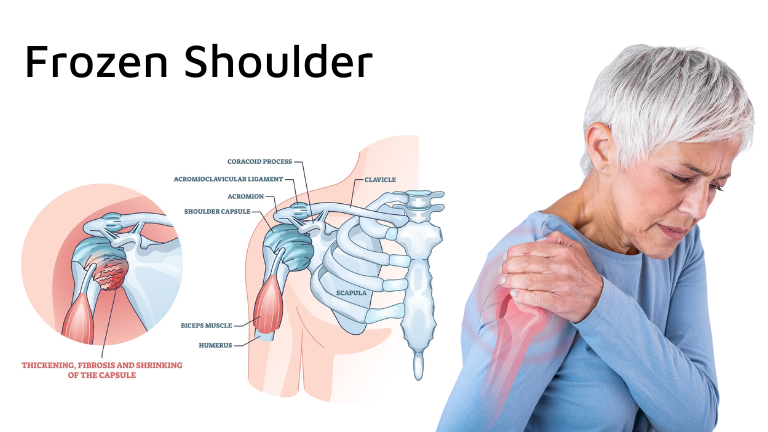
What Exactly is Frozen Shoulder?
Frozen shoulder, which we also call adhesive capsulitis, is when your shoulder joint slowly becomes stiff and painful, and then you find it almost impossible to move your arm freely. It usually affects people between the ages of 40 and 60 and is especially common if you have diabetes, thyroid issues, or if you had your shoulder immobilized after an injury or surgery.
When you have frozen shoulder, it feels like the joint is “locked” inside. This happens because the capsule of the shoulder (which is like a flexible cover holding the joint) becomes inflamed and thick, causing pain and limited movement.
From my Ayurvedic background, I see frozen shoulder as a clear Vata imbalance. Vata governs movement in our body, and when it becomes disturbed, it causes stiffness (Stambha), pain (Shoola), and dryness (Rukshata) in the joints. Ayurveda calls the shoulder joint Amsa Sandhi, and frozen shoulder is often due to blockage and irritation there.
Why Does Frozen Shoulder Happen?
In my practice, I commonly see these patterns:
- People with diabetes have a much higher risk (sometimes even both shoulders get affected).
- A history of neck pain or minor shoulder injuries often triggers it.
- Stress, lack of exercise, and cold exposure make it worse.
- And honestly, I’ve noticed people who keep ignoring early mild shoulder stiffness end up with full frozen shoulder because they think it will “go away on its own.”
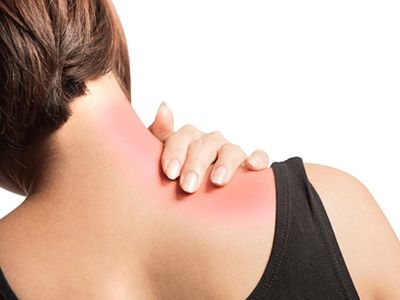
How Does Frozen Shoulder Progress? (Stages)
I always explain to my patients that frozen shoulder is not a sudden problem; it has phases:
- Stage 1 – Freezing (Painful Stage): Pain increases gradually, and you start losing movement. Sleeping on the affected side becomes impossible.
- Stage 2 – Frozen (Stiffness Stage): Pain slowly reduces, but the shoulder becomes very stiff, like someone has tied it down.
- Stage 3 – Thawing (Recovery Stage): Gradually, movement starts returning, and pain almost disappears. But this stage can take several months if not treated early.
Without treatment, the whole cycle can last 1–2 years, which is why I always tell my patients: “Start treatment early, don’t wait for it to heal by itself.”
Note for Non-Medical Readers
” If you are reading this article for personal understanding and are not interested in the detailed medical aspects like anatomy and physiology, you can skip directly to the Diagnosis Section. The anatomical and physiological details are included for medical students and professionals who want in-depth knowledge. For practical home understanding, jump ahead where we start with how to recognize frozen shoulder and what to do about it.”
Shoulder Joint Anatomy & Physiology
1. Bones and Joint Structure
The shoulder joint, also called the glenohumeral joint, is a ball-and-socket joint formed by:
- Humeral Head (Ball) – the top of the upper arm bone.
- Glenoid Fossa (Socket) – a shallow cavity of the scapula (shoulder blade).
Because the socket is shallow, the shoulder allows a wide range of motion but is less stable compared to other joints.
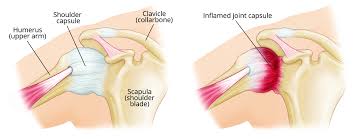
2. Supporting Structures
Joint Capsule:
- A thin, loose capsule surrounds the joint, allowing movement.
- In frozen shoulder, this capsule becomes inflamed, thickened, and fibrotic, causing stiffness.
Ligaments:
- Coracohumeral ligament & glenohumeral ligaments provide stability.
- These ligaments often become tight during frozen shoulder.
Labrum:
- A fibrocartilage rim deepens the socket and stabilizes the joint.
Rotator Cuff Muscles:
- Supraspinatus – helps lift the arm sideways.
- Infraspinatus – external rotation.
- Teres Minor – external rotation.
- Subscapularis – internal rotation.
These muscles stabilize the joint during all movements.
Bursae:
- Fluid-filled sacs (like the subacromial bursa) reduce friction.
- In frozen shoulder, movement restriction can secondarily irritate bursae, causing pain.
3. Nerve Supply
- Axillary Nerve (C5–C6): Supplies deltoid and teres minor, major role in lifting the arm.
- Suprascapular Nerve (C5–C6): Supplies supraspinatus and infraspinatus.
- Subscapular Nerve: Supplies subscapularis.
Pain from frozen shoulder often radiates along the distribution of these nerves.
4. Blood Supply
- Anterior & Posterior Circumflex Humeral Arteries.
- Inflammation and fibrosis can compromise microcirculation, contributing to stiffness.
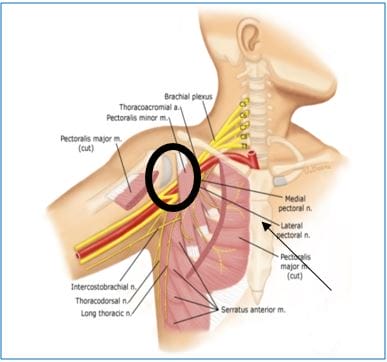
Shoulder Joint Physiology (Normal)
The shoulder joint is designed for maximum mobility:
- Flexion: 0°–180° (arm forward).
- Extension: 0°–45° (arm backward).
- Abduction: 0°–180° (sideways lift).
- Adduction: 0°–45° (towards body).
- Internal Rotation: 0°–70°.
- External Rotation: 0°–90°.
This mobility comes from:
- A loose capsule.
- Synovial fluid lubrication.
- Coordination between glenohumeral joint, scapulothoracic joint, and clavicle.
Changes in Frozen Shoulder (Abnormal Anatomy & Physiology)
- Capsular Thickening & Adhesions:
- The capsule, normally loose, becomes thick and stuck to itself and the humeral head.
- External rotation (the first movement lost) becomes severely restricted.
- Synovial Fluid Reduction:
- Inflammation decreases fluid production, causing friction and pain.
- Muscle Guarding & Atrophy:
- Pain causes protective spasm initially, later muscles (especially deltoid & rotator cuff) weaken from disuse.
- Nerve Hypersensitivity:
- Chronic inflammation leads to altered pain perception, making even mild movement feel painful.
- Scapulothoracic Compensation:
- Because the glenohumeral joint is restricted, patients move their scapula excessively, leading to altered biomechanics and neck strain.
Ayurvedic Correlation of Anatomy & Physiology
- Amsa Sandhi: Shoulder joint, site of Vata dominance.
- Sira-Snayu (Ligaments and Tendons): In frozen shoulder, Ruksha (dryness) and Stambha (stiffness) occur due to Vata vitiation.
- Asthi-Sandhi (Joint Connection): Asthi Dhatu involvement causes structural limitation; Majja Dhatu depletion reduces lubrication (like synovial fluid).
Key Clinical Correlation
- Loss of external rotation is the earliest and most important clinical sign.
- Limitation of both active and passive movement differentiates it from muscular injuries.
- Thickened capsule on MRI confirms adhesive capsulitis but is often diagnosed clinically.
How I Diagnose Frozen Shoulder
When someone visits me, the first thing I check is whether the stiffness is in both active (when they move by themselves) and passive (when I move their arm) movements. In frozen shoulder, both are limited. This is different from rotator cuff injuries where passive movement is usually free.
I also rule out neck-related nerve pain (cervical radiculopathy) because many people confuse shoulder pain from the neck with frozen shoulder. If pain is radiating down the arm with tingling, I know it’s likely coming from the neck.
How Modern Medicine Treats It
Modern medicine mainly focuses on reducing pain and improving mobility:
- Painkillers (NSAIDs) for relief.
- Physiotherapy for gentle stretching and mobility exercises.
- Steroid injections in severe cases for faster pain control.
- Surgery (arthroscopic release) only if everything else fails, which is rare.
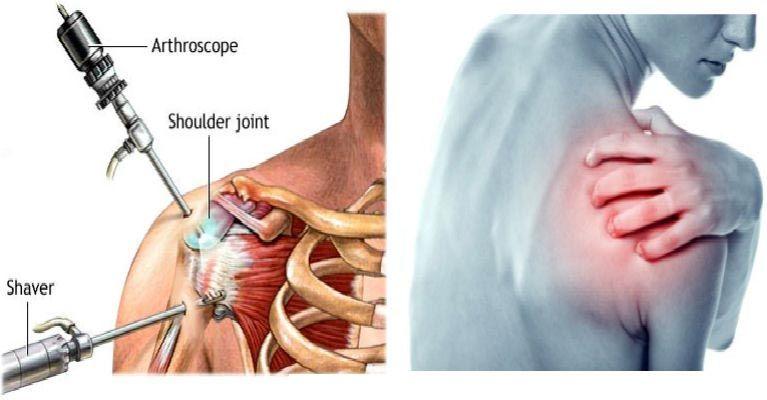
Physiotherapy plays a huge role, and I always encourage people to stick to it even if it feels uncomfortable in the beginning.
How Ayurveda Sees and Treats It (My Core Experience)
In Ayurveda, frozen shoulder is mainly a Vata disorder. The best results I have seen are when we combine external therapies with internal medicines and lifestyle changes.
Internal Medicines
I often prescribe classical Ayurvedic formulations like Rasnasaptaka Kashaya, Dashamoola Kwatha, and Yogaraja Guggulu because they reduce stiffness and improve joint mobility. In chronic cases, medicines that lubricate and nourish the joints (like Ashwagandha and Bala) are helpful.
External Therapies
This is where Ayurveda shines:
- Abhyanga (Medicated Oil Massage): Using warm oils like Mahanarayana Taila, which relaxes muscles and reduces stiffness.
- Svedana (Steam Therapy): Especially Patra Pinda Sweda (Kizhi) – warm herbal pouches to relieve stiffness.
- Basti (Medicated Enema): This is the best treatment for chronic Vata disorders and gives long-term relief.
- Upanaha (Poultice Application): For local pain relief.
Marma Therapy
Stimulating points around the shoulder and upper back (like Amsa Marma and Kakshadhara Marma) helps restore movement and reduce pain significantly. Many of my patients report immediate lightness after these sessions.

Exercises and Yoga I Recommend
Movement is key. Even when the shoulder is stiff, I advise gentle, pain-free exercises:
- Pendulum Swings: Lean forward and let the arm swing gently like a pendulum.
- Wall Climbing Exercise: Use fingers to “walk up” a wall slowly.
- Towel Stretch: Hold a towel behind the back and gently pull with the other hand.
- Yoga Poses: Modified Gomukhasana and Garudasana arms when pain allows.
- Pranayama: Anulom Vilom and Bhramari to calm the nervous system and improve pain tolerance.
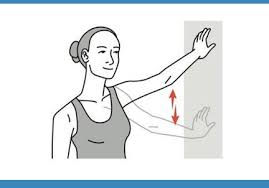
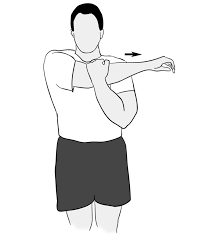
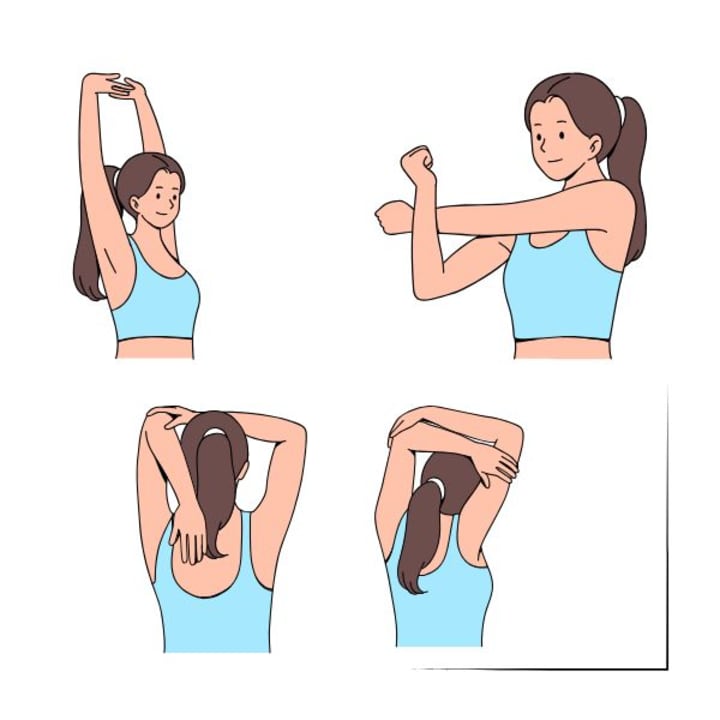
Diet and Lifestyle
From my experience, diet changes make a difference too:
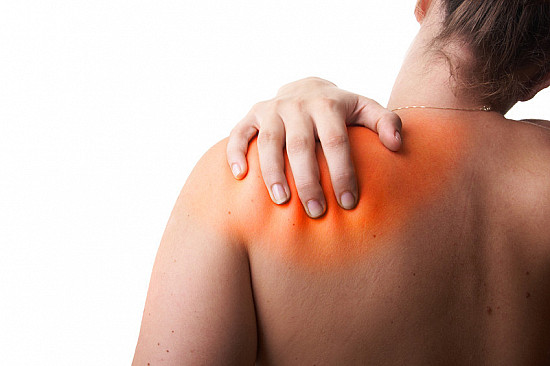
- Eat warm, unctuous foods like soups, ghee, and warm water.
- Avoid dry, cold foods that increase Vata (like chips, cold drinks, dry snacks).
- Apply sesame oil daily on the shoulder.
- Keep the joint warm (use hot water bags, wear shawls in cold weather).
My Simple Home Routine for Frozen Shoulder
For those who cannot visit a clinic immediately, I usually recommend:
- Morning: Gentle self-massage with warm sesame oil → hot fomentation → 5 minutes pendulum swing exercise.
- Evening: Wall climbing exercise and 5 minutes of deep breathing.
- Important: Never force movement if pain is sharp; gradual, consistent exercise works best.
Results I’ve Seen in My Practice
Most patients start feeling better within 2–3 weeks of combined therapy (Ayurveda + physiotherapy + home care). Within 2–3 months, many regain most of their movement. The fastest recovery I saw was in a 52-year-old diabetic woman who could barely lift her arm; with 2 weeks of therapies and home exercises, her pain reduced by 70%, and she could do most of her daily tasks again.
Final Thoughts
Frozen shoulder can be frustrating and emotionally draining, but you don’t have to live with it for years. Early diagnosis, integrative treatment, and home care can bring back mobility much faster. Whether you choose modern therapy, Ayurveda, or (like I recommend) a combination of both, the key is to start early and stay consistent.
I hope this article gives you clarity and confidence to handle frozen shoulder, whether you are a healthcare professional, a student, or someone personally dealing with it. Healing is possible, and your shoulder can move again – step by step, day by day.
References
- Reeves B. The natural history of the frozen shoulder syndrome. Scand J Rheumatol. 1975;4(4):193–196.
- Hsu JE, Anakwenze OA, Warrender WJ, Abboud JA. Current review of adhesive capsulitis. J Shoulder Elbow Surg. 2011;20(3):502–514.
- Kelley MJ, Shaffer MA, Kuhn JE, et al. Shoulder pain and mobility deficits: adhesive capsulitis. J Orthop Sports Phys Ther. 2013;43(5):A1–A31.
- Vata Vyadhi Chikitsa – Charaka Samhita, Chikitsa Sthana 28.
- Favejee MM, Huisstede BM, Koes BW. Frozen shoulder: the effectiveness of conservative and surgical interventions. Br J Sports Med. 2011;45(1):49–56.
Read our Other articles
Pain: A New Way to Understand It
COVID-19, Data Suppression, and the Rise of Integrative Health: Rebuilding Trust in Global Systems
India’s Ancient Science, Global Validation: Time to Embrace Our Heritage
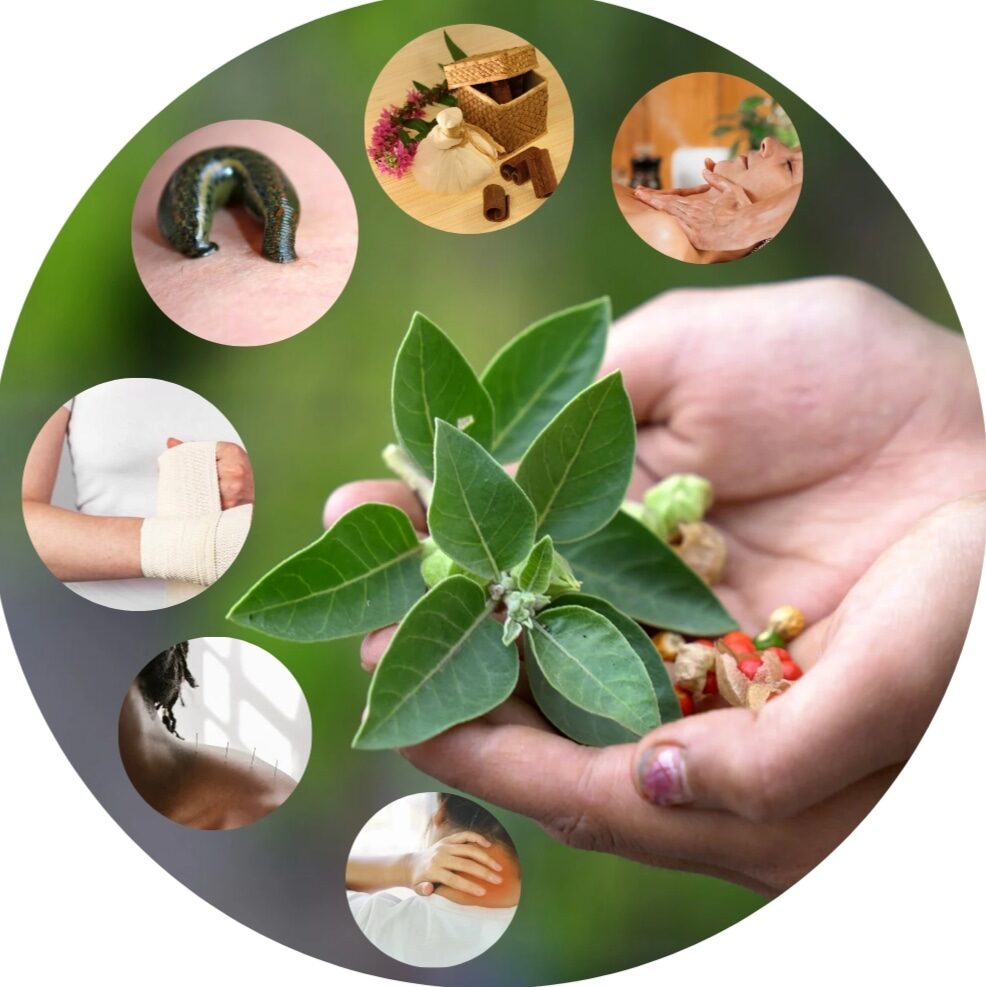



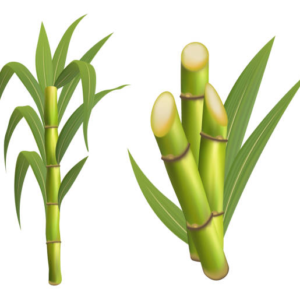

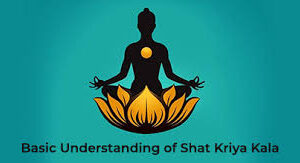
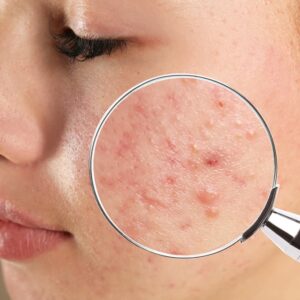
Thanks , I have recently been looking for info about this topic for ages and yours is the greatest I’ve discovered till now. But, what about the conclusion? Are you sure about the source?